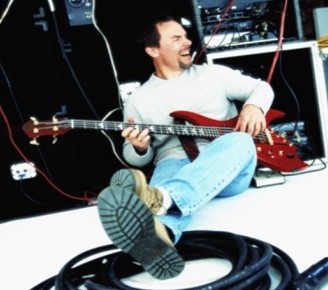Improvising Bass in Minor Keys – Guitar Tabs Provided
 People usually connect the concept of improvisation with the general vibration of jazz gigs. However, improvisation is not only something that happens on the stage but it is also a core part of the creation process. The ability to improvise different melodies and rhythms bards the musician with a whole range of new possibilities.
People usually connect the concept of improvisation with the general vibration of jazz gigs. However, improvisation is not only something that happens on the stage but it is also a core part of the creation process. The ability to improvise different melodies and rhythms bards the musician with a whole range of new possibilities.
Even though the creative process can be put in a limited framework defined by music theory, certain rules and certain tried practices. Let us take a look at how you can improve your skills when it comes the improvisation in minor key on the bass guitar and how that can improve your performance as a live musician and a music composer.
Understanding What a Minor Scale Is
Let us use a rather technical definition: a minor scale is a scale which has a tonic triad that contains at least three essential scale degrees. These are the tonic, an interval of a minor third above the tonic and an interval of a perfect fifth above the tonic. These three constitute a minor triad on the tonic note.
The above definition may refer to a whole range of different scales, but in most cases by referring to „minor scales” we usually think of natural, harmonic or melodic minor scales. The one that is the most commonly used out of these three is the natural minor scale, which consists of the following steps, in this order: whole, half, whole, whole, half, whole, whole.
Getting Started With Improvising
In order to be able to start off with improvising in one of the minor keys, we should probably start off with the simplest possible minor scale. Surprisingly, the scale that any musician knows can also function as a clever minor scale. More specifically: the C major scale can also be treated as a natural A minor scale; the example below will show how all of the notes of this scale are played in sequence.

Download the .gtp file for the lesson ( Right click and Save As… )
If you do not have GuitarPro yet, download a copy of Guitar Pro instantly here…
As you can see, there is not too much improvisation in playing a bare scale on its own. However, using the notes of this scale we can go much farther. You can use various elements like muffled notes, ghost notes and different levels of accentuation. Also, varying the rhythmical elements you use is a good idea and using licks like double stops will also enrich your playing. The next example below shows a relatively complex example, still inside the natural A minor chord presented above.

Download the .gtp file for the lesson ( Right click and Save As… )
Why Are There No tabs For Real Bass Solos?
When we are dealing with improvisation, there are no rules, really. Basically, the only rule you have to keep yourself to is staying inside the scale you have chosen. Learning some basic music theory will generally make your improvisation skills smoother and you will find it rather easy to express your musical thoughts through your instrument.
Due to the mentioned lack of rules, it is impossible to show concrete examples of how improvisation should be done. Improvisation is a free art and the best way to improve your skills is probably through improvisation and learning the theory behind what you are doing.
Transform Yourself From An Average Player Into a Competent Bassist
JamPlay has thousands of video lessons that are conveniently arranged in structured lesson sets. With high quality instructions from world renowned bassists, Jamplay is an unparalleled learning resource. Whatever your genre preferences, you’ll find something here to help you improve your current level of playing.
Related Articles
Comments are closed.





